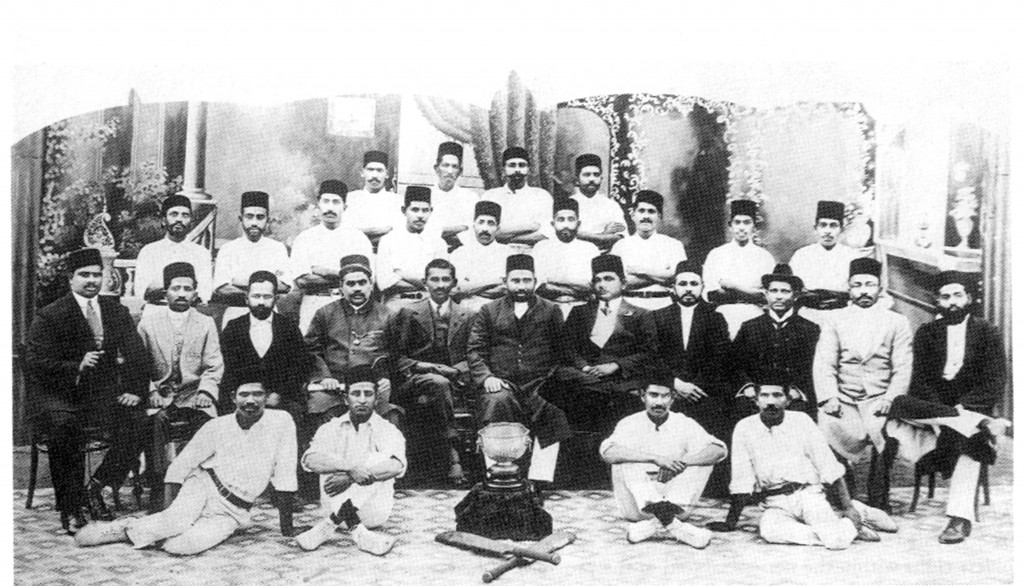
Ghandi and cricket in SA 1913.jpg: Mahatma Gandhi (seated fifth left, front row) with members of the Greyville Cricket Team, Durban, 1913. Source: Dr. Goolam Vahed, University of KwaZulu-Natal
A Leicester academic has helped curate an exhibition which reveals how India helped South Africa return to the international cricket stage after the fall of apartheid.
Dr Prashant Kidambi, Director of the University of Leicester’s Centre for Urban History, has helped curate an exhibition titled Cricket Connects: Indo-South African Cricket Relations as part of the Festival of India in South Africa 2014.
The exhibition began on Saturday 26 July at the Wanderers stadium, in Johannesburg, and shifts to Kingsmead Sahara Stadium in Durban on Friday 15 August, until 31 August.
The exhibition focuses on the long history of cricketing relations between the two countries, dating back to the late nineteenth century.
In particular, it looks at how India helped South Africa find its way back into the international sporting world in the early 1990s, following the end of Apartheid.
Cricket established itself as a popular sport in India by the end of the nineteenth century – and the exhibition’s organisers comment that it “now forms a binding force for the entire country”.
Consequently, cricket became a very important way for migrant Indian communities in South Africa to interact with each other and other non-European races.
However, relations between the two countries took a blow in 1948 when the National Party came to power in South Africa and established the Apartheid. India became the first country to close its embassy.
In the following years, India was seen as a main opponent of the Apartheid until racial segregation began to be phased out in the 1990s.
Consequently, India’s decision to support South Africa’s re-entry into international cricket at a meeting of the International Cricket Council ICC) was seen as an important endorsement for South Africa.
Following the ICC meeting, the South African team toured India in 1991, and the Indian side toured South Africa in 1992-3 – the first official tour by a non-White team in the country.
The exhibition’s organisers comment that the two nations have had a very close cricketing relationship ever since.
The exhibition features a variety of documentary footage, photographs and audio. It will feature 175 significant cricketing moments captured on camera between 1991 and 2012, and there will also be some cricket-related memorabilia on display.
Dr Prashant Kidambi said: “This is an important exhibition which showcases the role of sport in both promoting the bonds of solidarity but also highlighting the tensions it can generate.
“We are using cricket to understand the long history of interaction between India and South Africa. Cricket is a way of showcasing how the historic connections between India and South Africa have played out.
“Indians have come to South Africa since the 19th century. Cricket became a way in which migrant communities came to relate to each other. The exhibition showcases that kind of history.
“It also shows what happened after apartheid. India was very strenuous in opposing South Africa on the international stage, but supported South Africa’s re-entry into international cricket after the end of apartheid.”
Edited article via Leicester, University of
